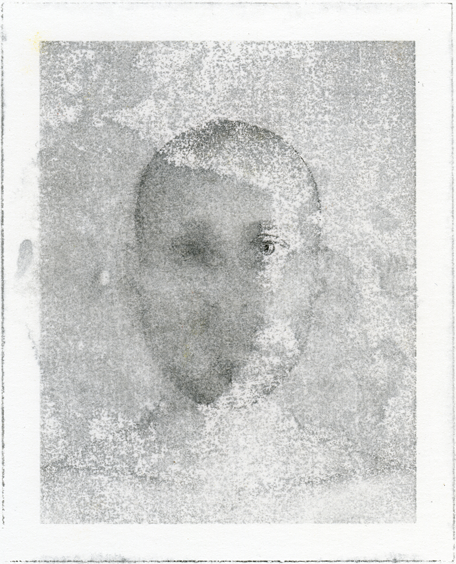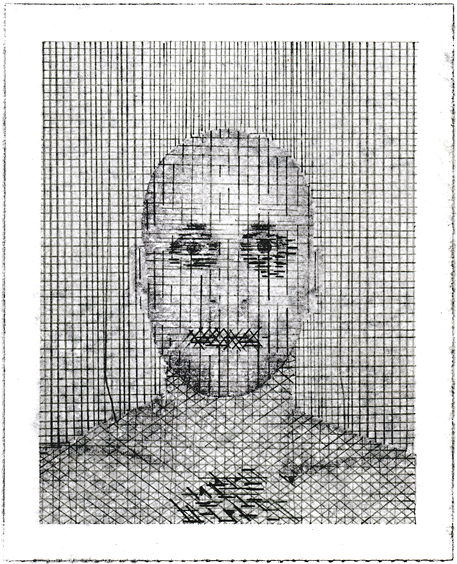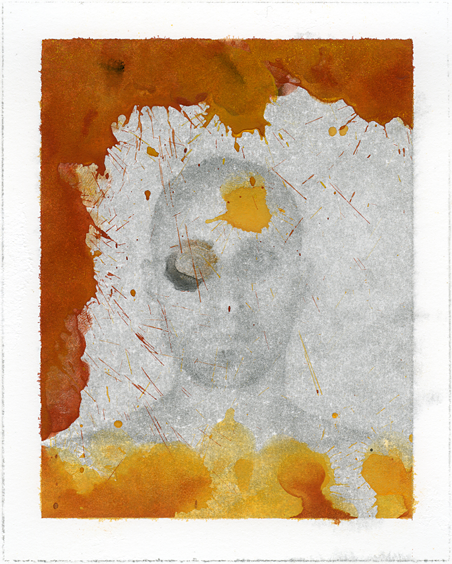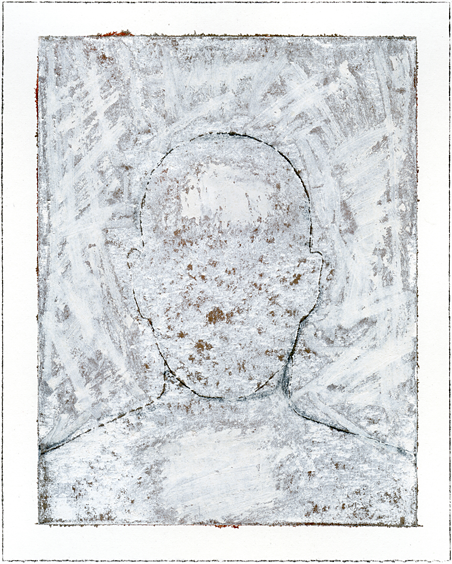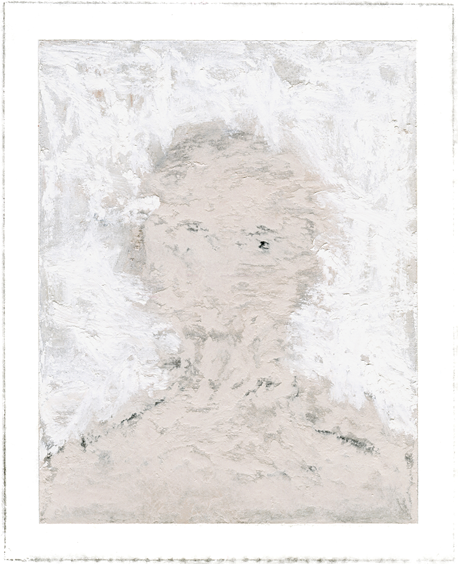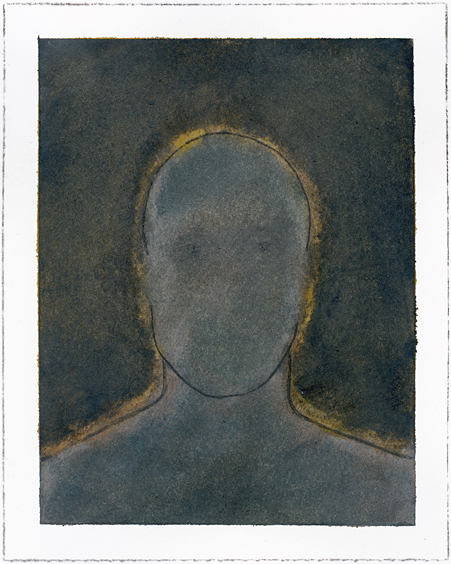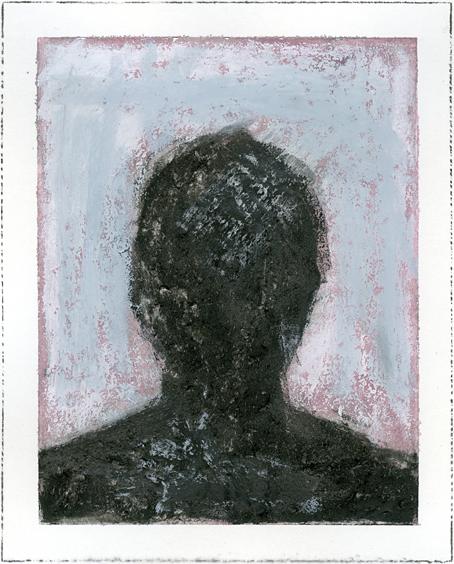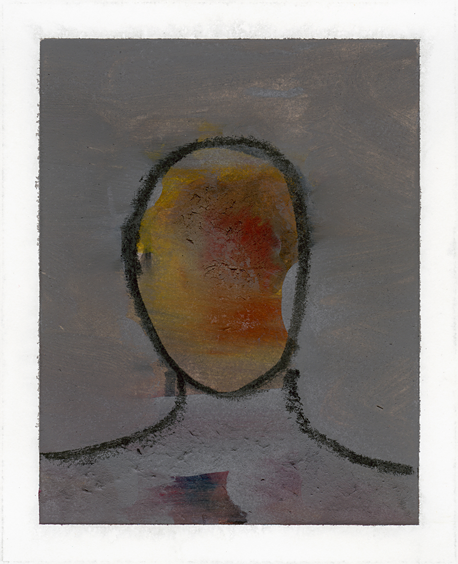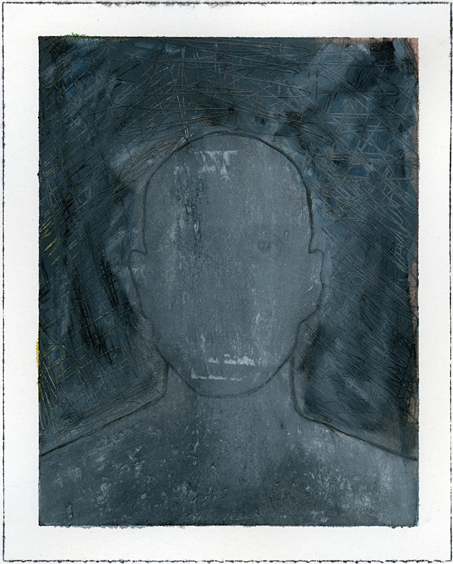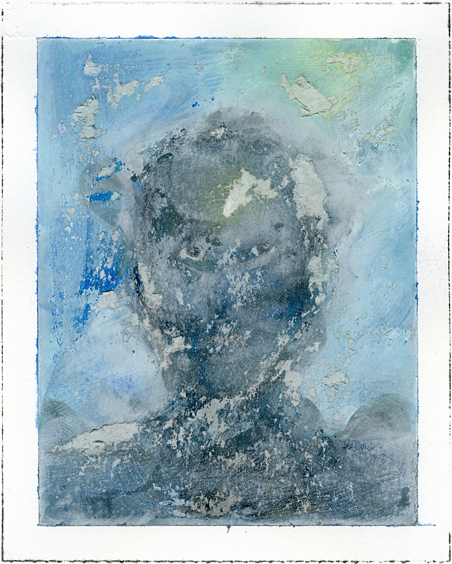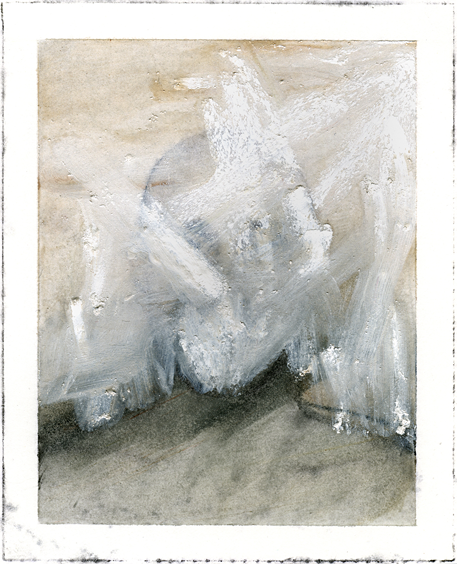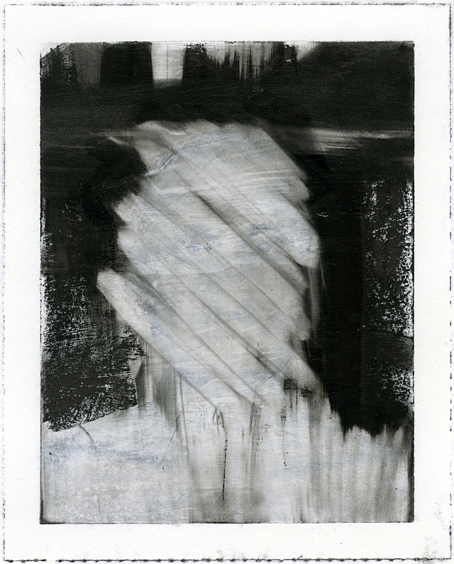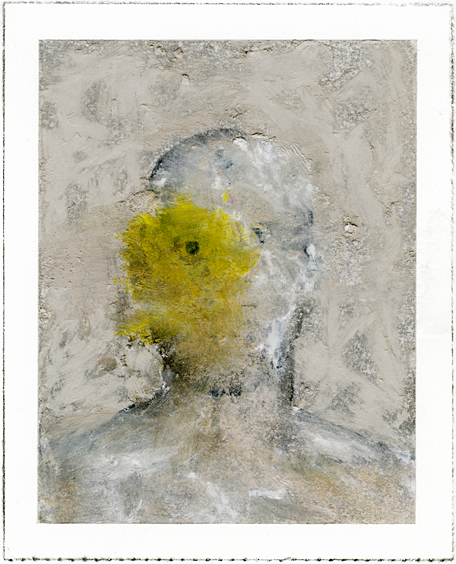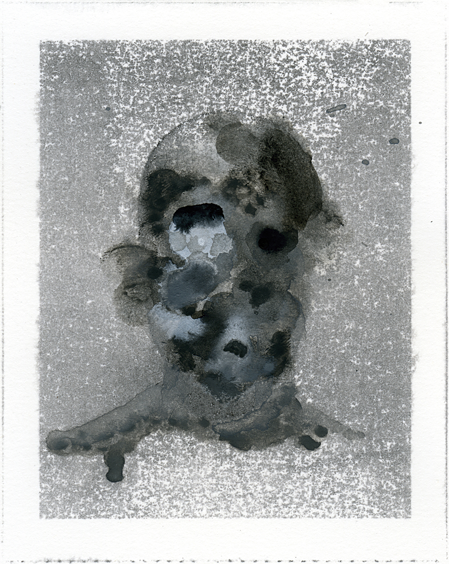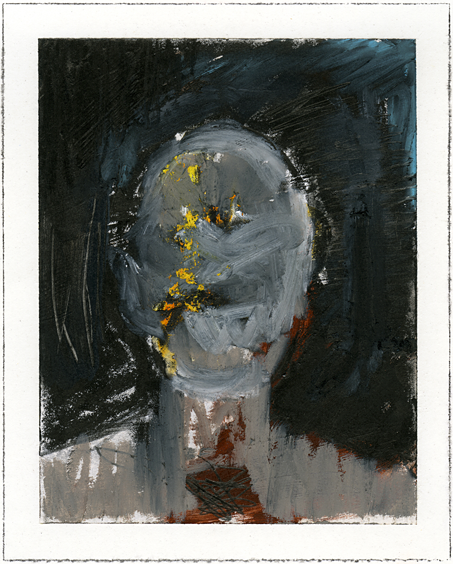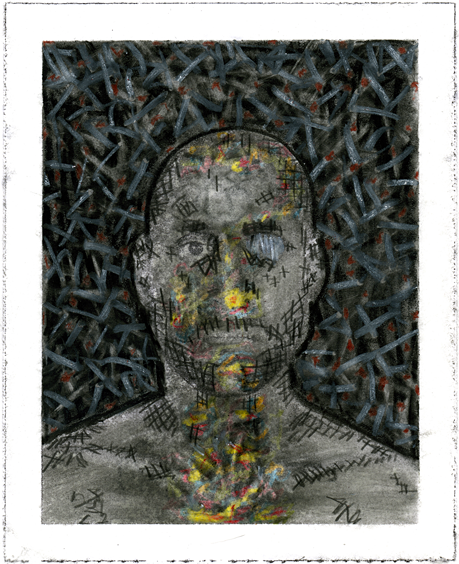An explanation of my process:
First, by virtue of the medium of photography, the dimensions of my face and the
background comprising the space around my head are compressed into the two
dimensions of a flat 4 by 5 inch Polaroid photograph. In addition, the Polaroid
photograph is a beautifully imperfect medium which renders a somewhat
unpredictable, low-fidelity, and highly inaccurate color image.
Next, I make a series of black and white photocopies of one color Polaroid using a
local pharmacy copy machine; on account of the casual use of this copy machine,
the lens and glass is often dusty and scratched, rendering a further degraded image.
Additionally, the stripping of color from the image removes key indices that could
steer a viewer toward a specific reading of my face and the background.
In the last stage, I transfer the photocopy onto a piece of 9 by 12 inch Bristol
paper by placing the toned surface of the photocopy directly onto the Bristol paper
and rub chemicals on the back of the photocopy. This last printmaking process
creates the highest degree of variation within a series of consistent photocopies of
one Polaroid. Some transfers reveal greater figurative clarity than others. This part
of the process also flops my image on the vertical axis. As opposed to the relatively
familiar and daunting rendition of my visage found in the Polaroid, the degraded and
less familiar image of me that remains is approachable and allows for intimate
interaction and reaction.
At the end of this stripping-down three-stage process, I work back onto the
deteriorated image of myself, allowing a reconstruction to emerge using gouache,
graphite, pastel, crayon and other media.
